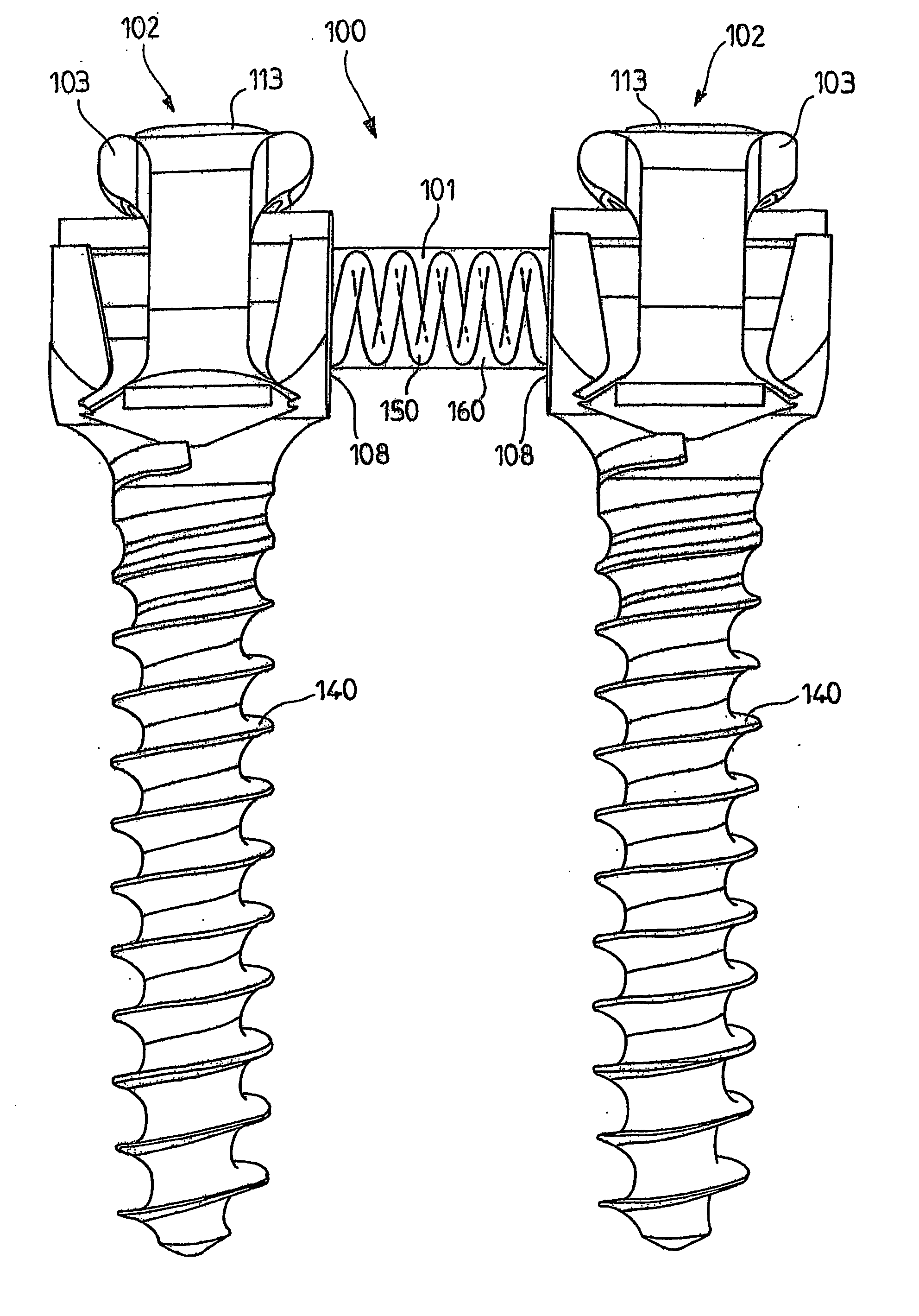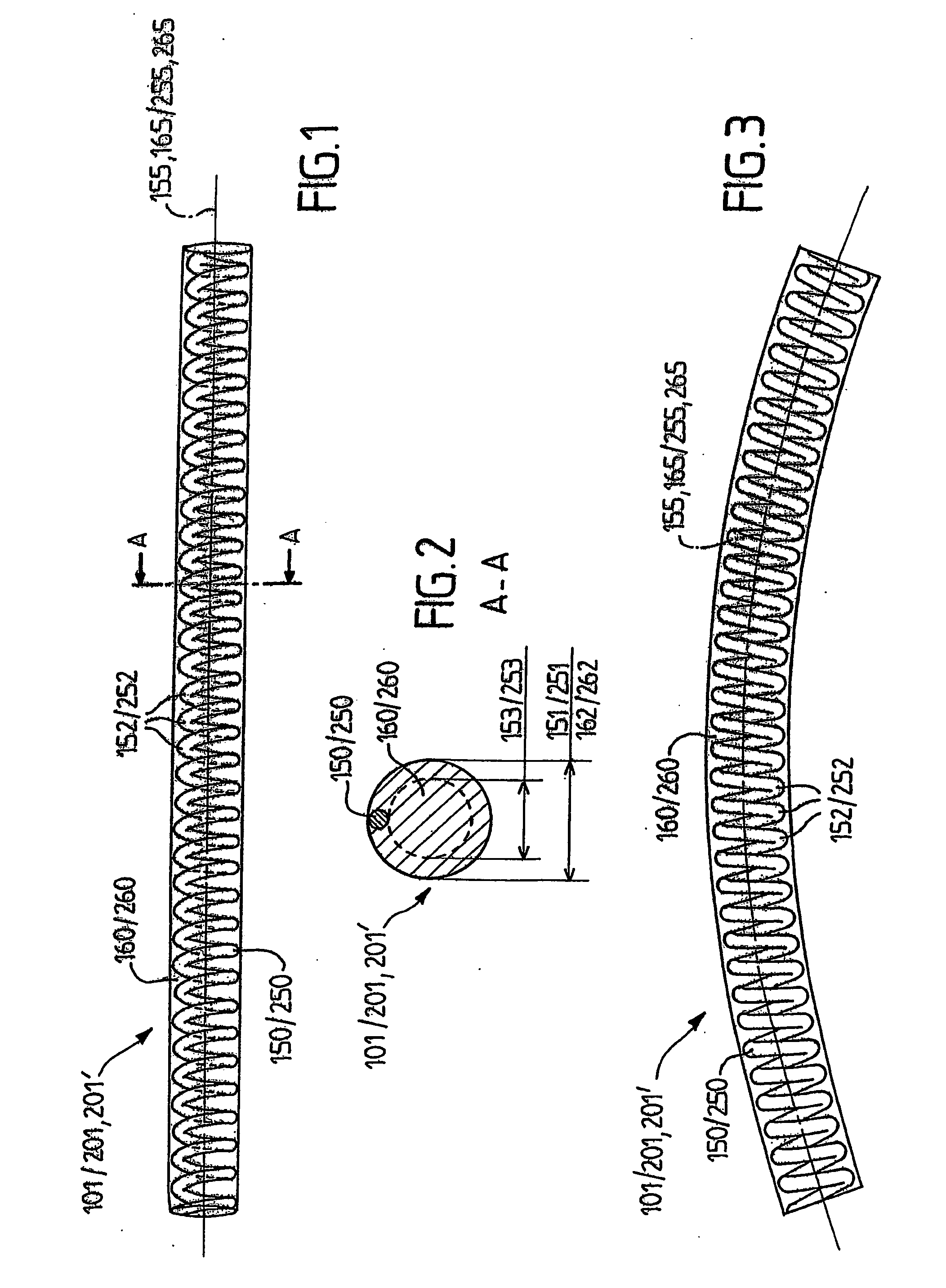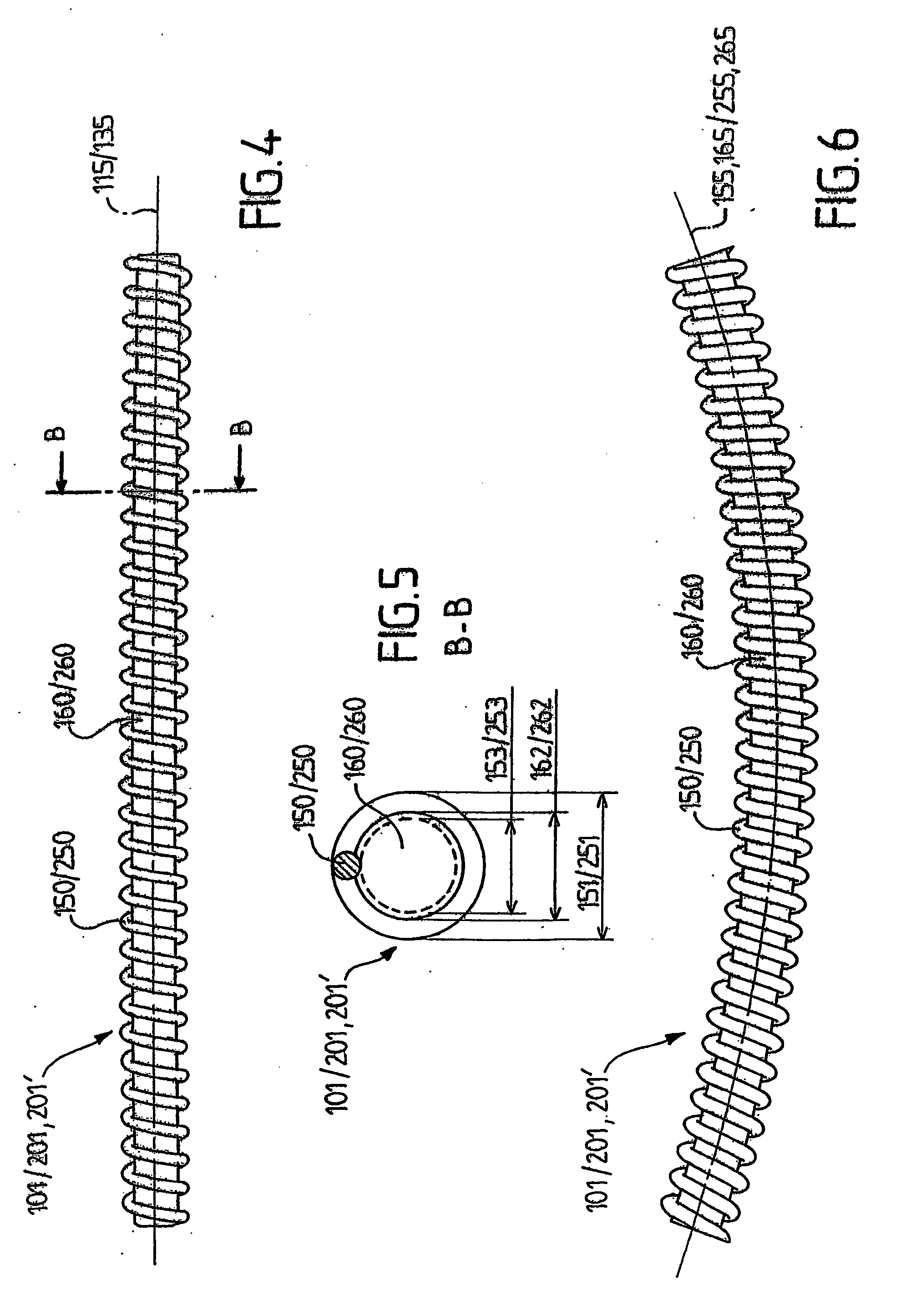Linking element for dynamically stabilizing a spinal fixing system and spinal fixing system comprising same
a dynamic stabilization and linking element technology, applied in the field of spinal systems for linking the vertebrae, can solve the problems of difficult introduction of the band, insufficient effective distance between the screws after tensioning the band, and insufficient and achieve the effect of small volume and desired resistance to compression and extension
- Summary
- Abstract
- Description
- Claims
- Application Information
AI Technical Summary
Benefits of technology
Problems solved by technology
Method used
Image
Examples
first embodiment
[0058] An implantable connecting assembly (102) according to the invention is an assembly such as the one which is known from international patent application WO 01 / 01873 and whose cooperation with the linking element according to the present invention is described in greater detail below, with reference to FIGS. 10 through 19.
second embodiment
[0059] An implantable connecting assembly (202) according to the invention is an assembly such as the one which is known from international patent application WO 01 / 39677 and whose cooperation with the linking element according to the present invention is described in greater detail below, with reference to FIGS. 20 through 23.
[0060] The linking element (101, 201, 201′) is substantially tubular or cylindrical and has a longitudinal axis. Its external diameter is of the order of 6 millimeters.
[0061] The linking element (101, 201, 201′) according to the invention is composed, at least partly, of:
[0062] on the one hand, a helical spring (150, 250) having an axis (155, 255) and turns (152, 252) and,
[0063] on the other hand, a support (160, 260) made of polymer material and having an axis (165, 265) substantially parallel with the axis of said helical spring (150, 250).
[0064] Said turns are at least partly embedded in at least one support (160, 260) made of polymer material.
[0065] T...
third embodiment
[0072]FIGS. 7 and 8 show the linking element according to the invention, in which the support (160, 260) is tubular and has an external diameter (162, 262) substantially identical to the external diameter (151, 251) of the turns (152, 252), and an internal diameter (163, 263) smaller than the internal diameter (153, 253) of the turns (152, 252). In addition, the linking element comprises a rod (170, 270) at its center. This rod (170, 270) has an axis (175, 275) substantially coaxial with the axis (155, 255) of said spring (150, 250).
[0073] This rod (170, 270) additionally has an external diameter (171, 271) smaller than the internal diameter (153, 253) of said turns (152, 252).
[0074] The rod (170, 270) can be made of metal, or of metal alloy, or of any type of material permitting production of such a rod.
[0075] It should be noted that the rod (170, 270), the helical spring (150, 250) and, consequently, the linking element (101, 201, 201′) can be curved, according to a desired curv...
PUM
 Login to View More
Login to View More Abstract
Description
Claims
Application Information
 Login to View More
Login to View More - R&D
- Intellectual Property
- Life Sciences
- Materials
- Tech Scout
- Unparalleled Data Quality
- Higher Quality Content
- 60% Fewer Hallucinations
Browse by: Latest US Patents, China's latest patents, Technical Efficacy Thesaurus, Application Domain, Technology Topic, Popular Technical Reports.
© 2025 PatSnap. All rights reserved.Legal|Privacy policy|Modern Slavery Act Transparency Statement|Sitemap|About US| Contact US: help@patsnap.com



